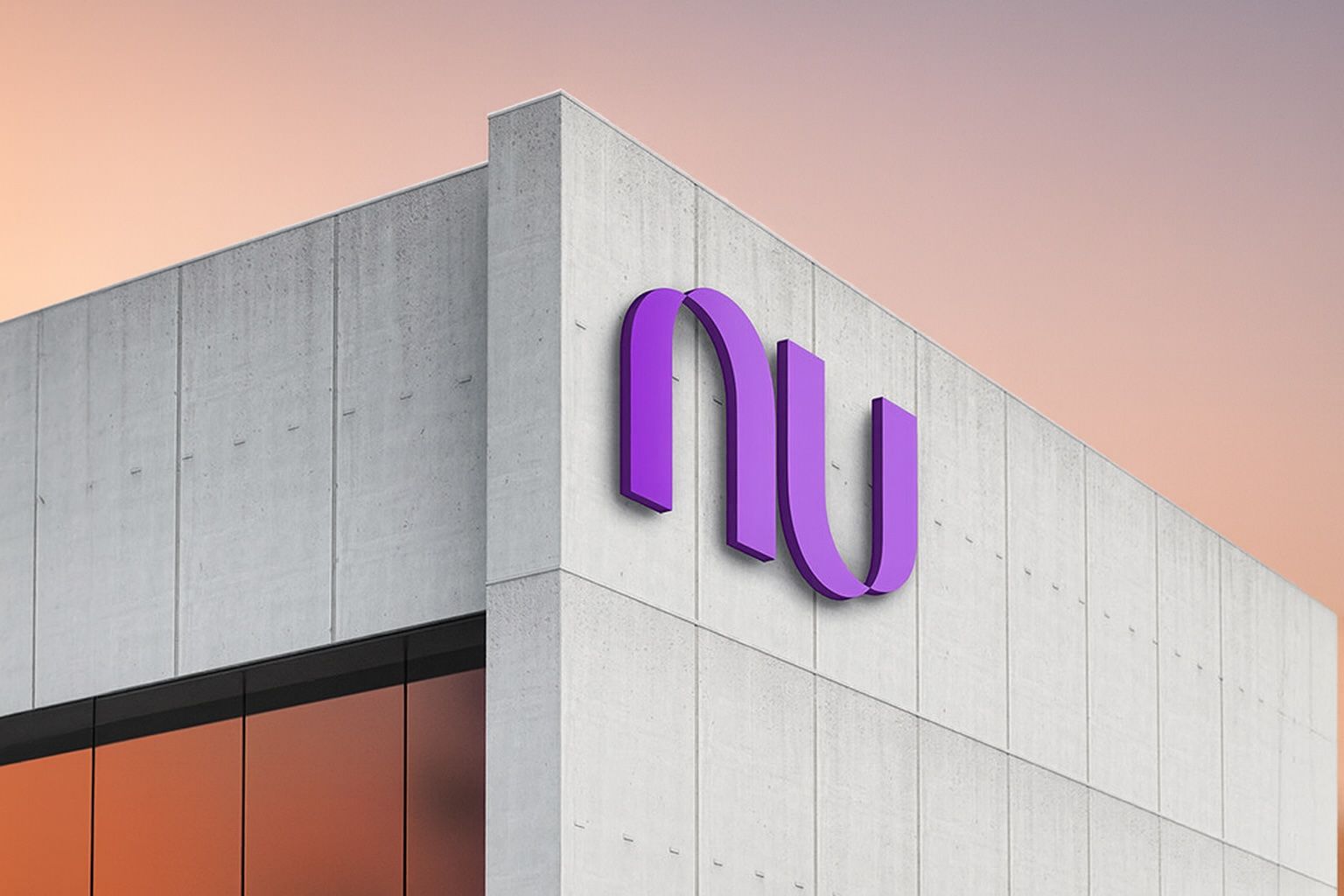- Surging Stock Near Highs: Nu Holdings (NYSE: NU) is trading around the mid-$15 range after a recent rally, hovering just below its 52-week high of ~$16.4 [1]. Shares reached all-time highs in late September, briefly making Nu the most valuable lender in Latin America [2]. The stock has soared roughly 250% over the past three years [3] and is up around 50% year-to-date, vastly outperforming broader markets.
- Breaking News – U.S. Expansion: The Brazilian fintech applied for a U.S. national bank charter as part of its first major expansion beyond Latin America [4]. Co-founder Cristina Junqueira will head the U.S. unit, and leadership is optimistic: “by working closely with regulators, we will soon be in a position to expand our offering to the broader U.S. market,” Junqueira said [5]. The move aims to eventually offer American customers deposits, credit cards, loans, and more – news that sent Nu’s stock jumping over 1% on announcement [6].
- Red-Hot Growth Metrics: Nu’s latest results show explosive growth despite macro headwinds. In Q2 2025 alone, the neobank added 4.1 million new customers (up 17% YoY), reaching 122.7 million users across Brazil, Mexico and Colombia [7] – over 60% of Brazil’s adult population. Revenue climbed 40% year-over-year (FX-neutral) [8], fueled by booming lending and fee income. Average revenue per active customer jumped 18% to about $12.20, while cost-to-serve fell to just ~$0.80 [9] [10], underscoring Nu’s scalable digital model.
- Analysts Bullish – More Upside Seen: Wall Street is broadly positive on Nu Holdings’ outlook. Major firms have raised targets after strong execution – e.g. Citigroup upgraded NU from Sell to Buy and doubled its target to $18 in August [11]. In total, 9 analysts rate NU a Buy vs. 4 Holds, with an average price target around $17.10 [12] (~10% above current levels). The consensus is “Moderate Buy,” reflecting confidence in Nu’s growth trajectory and improving profitability.
- Institutional Bets & Fintech Momentum: Big investors are piling in. This month, Hamilton Lane Advisors took a new $18 million stake (1.13 million shares) in Nu Holdings [13], making it a top-3 holding in one of its funds [14]. Other institutional holders increased positions as well [15]. The moves highlight rising confidence in Nu as a fintech leader, even after Warren Buffett’s Berkshire Hathaway famously cashed out earlier this year. In the broader fintech arena, digital finance stocks are on fire – for instance, U.S. trading app Robinhood is up ~250% in 2025 amid crypto-fueled trading activity [16]. Nu’s unrivaled scale in emerging markets gives it an edge over most neobank peers [17].
Stock Performance & Recent Trends
Nu Holdings’ stock has been on a tear in 2025, climbing back toward record highs on the strength of its growth story and fintech sector optimism. Analysts note the stock is trading near the upper end of its range as investors price in strong earnings momentum.
Nu Holdings’ share price has seen strong upward momentum this year, drastically outperforming the market. The stock recently traded around $15.5 per share, approaching its all-time peak after a brisk October rally. It hit an intraday record high in late September – a milestone that briefly crowned Nu as Latin America’s most valuable lender, surpassing even banking giant Itaú Unibanco [18].
Even after a modest pullback in early October (when Nu slid ~7% over a month amid broader market turbulence [19]), the overall trend remains positive. As of October 23, shares are up roughly 50% year-to-date and about 5% higher than a year ago, reflecting massive gains achieved earlier in 2025. Over a three-year horizon the performance is even more striking – Nu’s stock has surged ~250% since 2022 [20], rewarding early investors with multi-bagger returns. This meteoric rise has come with higher volatility, but so far Nu has weathered dips and continually climbed to new highs on the back of its rapid growth.
Valuation-wise, Nu’s market capitalization now hovers near $73–75 billion [21], with the stock priced around 33× forward earnings – a rich multiple that bakes in significant growth expectations. The company’s P/E-to-growth (PEG) ratio around 0.8 suggests its earnings growth (near 30%+) justifies the premium [22]. Nu’s 52-week trading range spans from a low of ~$9 to a high of $16.42 [23], illustrating how far it has climbed in the past year. Notably, Nu’s shares have proven resilient, quickly rebounding from periodic profit-taking selloffs. For example, after dipping below $14 in mid-September, the stock bounced back to the mid-$15s by late October amid renewed bullish sentiment.
Expansion Moves & Breaking Developments
Nu Holdings has been making headlines with ambitious expansion plans and strategic moves, which in turn have acted as catalysts for the stock. The most significant recent development is Nu’s bold entry into the U.S. market. On October 7, Nu announced it applied for a U.S. national bank charter, marking its first major foray beyond Latin America [24]. This regulatory application with the Office of the Comptroller of the Currency (OCC) is a crucial step toward offering banking services in the United States. “The decision is aligned with the company’s intention to explore future international opportunities by evolving its regional platform into a global model,” Nu said in its statement [25], underscoring its vision to become a global fintech player.
The U.S. expansion news was met with optimism. Shares jumped over 1% on the announcement before settling, as investors digested the long-term growth implications [26]. Securing a U.S. bank charter would enable Nu to offer deposit accounts, credit cards, loans, and digital asset custody to U.S. customers [27]. Initially, the move will help Nu serve existing Latin American clients living in the U.S., but over time it could allow the neobank to “connect with those who share similar financial needs [in the U.S.] and could benefit from our products,” according to CEO David Vélez [28]. In other words, Nu sees an opportunity to win over U.S. consumers disillusioned with traditional banks, replicating its Latin American playbook of accessible, low-cost digital banking.
To spearhead the expansion, co-founder Cristina Junqueira will lead Nu’s U.S. operations, and the company brought on heavyweight advisors – former Brazil central bank chief Roberto Campos Neto will chair the U.S. unit’s board [29]. “While there’s work ahead, we believe that by working closely with regulators, we will soon be in a position to expand our offering to the broader U.S. market,” Junqueira said, expressing confidence in navigating the regulatory process [30]. The timeline is uncertain (OCC approvals can take many months), but Nu’s intent is clear: it aims to become a global neobank with a presence in the world’s biggest banking market.
Beyond the U.S. charter news, Nu has also been expanding in its home region. The company continues to gain ground in Mexico and Colombia, where it has been growing its user base by double-digit percentages [31]. These newer markets offer significant runway as Nu exports its Brazilian success model. Additionally, Nu’s management hinted at exploring other international opportunities via partnerships or investments in digital banks abroad [32]. In October, for instance, Nu was reportedly eyeing opportunities in other global markets while remaining focused on Latin America as its core growth engine [33].
On the corporate development front, a notable recent headline was Hamilton Lane’s investment in Nu. In mid-October, U.S.-based asset manager Hamilton Lane Advisors disclosed it acquired ~1.13 million NU shares (worth ~$18 million) in Q3 2025 [34]. This is a significant new stake – representing over 10% of that fund’s assets – signaling institutional confidence in Nu’s prospects [35]. The fund’s filing showed Nu now among its top holdings, alongside other fintech and tech bets. Market watchers saw the move as evidence of growing international investor appetite for Latin America’s fintech champion. It’s worth noting that Berkshire Hathaway’s Warren Buffett, who invested in Nu pre-IPO, had fully exited his stake by early 2025 (after roughly tripling his money). But the baton seems to be passing to a new cohort of investors eager to ride Nu’s next chapter.
Looking ahead, another key event on the horizon is Nu’s Q3 2025 earnings report, scheduled for November 13. Investors are keen to see if Nu can extend its streak of strong results. Early analyst estimates project quarterly earnings of around $0.15 per share [36], up from $0.12 a year ago. Any surprises in user growth or profit margins could move the stock. Nu’s last earnings (Q2) slightly beat profit forecasts [37], and management struck an optimistic tone about sustained growth. Given the stock’s run-up, near-term volatility is possible around the earnings date – any hint of slowing momentum or rising credit losses could spark a pullback. Conversely, confirmation of torrid growth could propel NU shares to new highs.
Growth Momentum & Financial Highlights
Nu Holdings’ financial performance underpins its market enthusiasm. The company, which operates the wildly popular Nubank digital banking platform, continues to post eye-popping growth numbers. In the second quarter of 2025, Nu’s revenues hit $1.87 billion (or $3.7 billion for the first half), marking a 40% year-over-year increase (on a currency-neutral basis) [38]. This top-line growth is fueled by diversified income streams – from interest income on its expanding loan book, to interchange fees from card spending, to commissions on marketplace products (like insurance and investing) offered through its app [39]. Nu’s ability to sustain 30-40% revenue growth at its scale is exceptional, outpacing many fintech and traditional bank peers.
Crucially, Nu is growing profitably. It has flipped the script on the old “growth vs. profit” tradeoff that plagued many fintech startups. Net income has been rising alongside revenue. In Q2, Nu delivered $262 million in profit (about $0.14 EPS), beating expectations and nearly doubling from a year prior [40]. Profit margins are expanding too: Nu boasts a 17.9% net margin and a striking 29.9% return on equity [41], indicating highly efficient use of capital. According to Zacks Investment Research, “NU is a classic case of a company that’s scaling profitably” [42] – its largely digital operations yield significant cost advantages over brick-and-mortar banks. For example, Nu’s cost to serve each active customer is now under $1 per month (around $0.80), thanks to automation and economies of scale [43]. Meanwhile, the average revenue per active customer (ARPAC) hit $12.20, up 18% year-on-year [44]. Growing ARPAC means Nu is successfully monetizing its user base by cross-selling more products (like personal loans, investments, or insurance) to existing customers. This combination of rising ARPAC and low servicing cost translates to improving operating leverage – essentially, each additional customer is increasingly profitable.
The user growth story is perhaps Nu’s most impressive metric. Founded just a decade ago, Nubank started by offering no-fee credit cards in Brazil. Today, Nu has over 122.7 million customers across Brazil, Mexico, and Colombia [45], making it one of the world’s largest digital banks by user count. In Brazil, Nubank’s 107 million users give it a majority share of the adult population [46]. And notably, growth has not plateaued: Nu is still adding ~1 million new users every month in Brazil, and growing even faster in Mexico and Colombia in percentage terms [47]. Such scale gives Nu a tremendous network effect and cost advantage – its brand is ubiquitous and customer acquisition costs remain relatively low due to referrals and organic traction.
Digging deeper, Nu’s growth is not just about adding users, but also expanding its platform. The company keeps rolling out new products to deepen engagement. Recently, it launched NuInvest for stock trading, NuCrypto for cryptocurrency investing, and even insurance offerings – all within the same app ecosystem. It has also introduced features targeting different demographics, like a credit card for teenagers to capture younger users early [48], and premium services for affluent clients (e.g. ultrahigh-limit credit cards, investment products) to prevent “graduation” to traditional banks [49]. These initiatives are driving a higher share of wallet from customers. As CEO David Vélez has often stressed, Nu’s vision is to become customers’ primary financial hub, from payments and deposits to loans and investments. The latest metrics show this strategy working: over 60% of Nubank’s active users now use it as their main bank, and multi-product adoption is climbing (many customers have checking, credit, and investment products all through Nu).
Looking forward, analysts expect Nu’s hypergrowth to continue, albeit at a moderated pace as the base gets larger. Consensus forecasts call for ~35–40% revenue CAGR in the next few years and EPS to grow at ~30% annually [50]. One upside catalyst is the credit business: as Brazil’s interest rates stabilize at lower levels, Nu is expanding personal and small-business lending, leveraging its huge data on customers to manage risk. Its loan portfolio grew 40% YoY in Q2 [51], yet credit penetration is still low among its users, which leaves a long runway. Another lever is international expansion – success in Mexico/Colombia (and eventually the U.S.) could add millions more users and new revenue streams. Nu’s management has hinted at possibly rolling out services in other high-potential emerging markets down the line [52]. In summary, Nu’s financial foundation appears strong: rapid growth, improving profitability, and ample expansion avenues – a rare trifecta in the fintech world.
Analyst Insights & Forecasts
Wall Street analysts have taken note of Nu Holdings’ remarkable rise and are largely optimistic that the story isn’t over. Currently, the stock enjoys a “Moderate Buy” consensus rating, and many experts see further upside despite the big gains so far. According to MarketBeat data, 9 analysts rate NU a Buy and 4 rate it Hold, with zero Sell ratings on the stock [53]. The average 12-month price target is about $17.10 [54], roughly 10% above the latest price – suggesting analysts see Nu continuing to outperform, though perhaps at a more modest pace. Price targets among major banks cluster in the mid-to-high teens. For instance, JPMorgan recently reiterated an Overweight rating and raised its target from $16 to $17 [55], citing Nu’s strong user growth and the long-term monetization potential of its huge customer base. Bank of America holds a Neutral view but still lifted its target from $14 to $16 after Nu’s earnings beat in August [56], acknowledging the company’s execution. Perhaps most striking, Citigroup – which was once bearish – upgraded Nu from Sell to Buy in late August and hiked its target from $9 to $18 [57], a dramatic shift that reflected Nu’s improving fundamentals and resilience. Brazilian brokerage Bradesco Corretora also initiated coverage with an Outperform and $17 target [58]. The takeaway: sentiment has broadly improved over the course of 2025, as Nu has proven its ability to grow at scale profitably.
Market commentators are weighing in as well. A recent Motley Fool analysis described Nu as a “fintech superstar” that has “incredible growth opportunities” ahead, noting the stock “looks like it’s just getting started.” [59] Many point out that Nu’s valuation – while rich – isn’t outrageous given its growth. “NU’s unmatched scale and speed of customer acquisition in emerging economies create a competitive edge that few global fintechs can rival,” wrote a Zacks analyst, highlighting how unique Nu’s story is on the world stage [60]. However, there are some notes of caution. That same analysis warned that after such a steep climb, “any earnings miss or slowdown in user growth could trigger a valuation correction”, given the high expectations baked into the price [61]. In fact, Zacks ultimately suggested a hold stance in the near term – arguing that while Nu’s long-term fundamentals are stellar, the recent volatility and “lofty valuation” mean investors might want to wait for a better entry point on any dips [62]. This balanced view is echoed by some others: Nu is executing well, but the stock isn’t “cheap” anymore, so short-term traders should be prepared for swings.
On the bullish side, forward-looking forecasts remain upbeat. Many analysts predict Nu will continue compounding earnings at a high rate through 2026. The consensus calls for ~$0.58 EPS in FY2025 (versus ~$0.40 in FY2024) and over $0.75 by 2026 [63]. There is also talk of potential share buybacks or even dividends in a few years, once the company’s high-growth phase matures – though for now Nu is reinvesting heavily in expansion. Some bulls have even floated the idea that Nu could eventually list its shares in Brazil (it’s currently U.S.-listed only) to capitalize on local investor demand, but management hasn’t indicated any immediate plans for a dual listing.
Overall, the analyst sentiment can be summarized as cautiously optimistic: virtually everyone agrees Nu Holdings is a fintech success story with a dominant franchise and long runway, but opinions differ on how much of that is already reflected in the stock price. For investors, the key will be watching upcoming earnings and operational updates to see if Nu can keep exceeding the high bar it has set – if it does, many believe the stock’s uptrend could have further to go.
Fintech Industry Context and Competition
Nu Holdings’ rise comes amid a broader resurgence in fintech and neobank stocks this year. After a tough 2022, the digital finance sector has rebounded strongly in 2023–2025, and Nu is one of the highest-profile winners. But it’s not alone – the rally has been widespread. For example, U.S.-based trading platform Robinhood has seen its stock rocket roughly 250% year-to-date in 2025 [64], fueled by booming crypto trading volumes and its addition to the S&P 500 index. Similarly, other fintech firms like SoFi Technologies (online lending and banking) and Block (formerly Square, focusing on payments and crypto via Cash App) have also notched strong gains this year. Each of these companies operates a different model – “SoFi focuses on deepening member relationships” with an all-in-one finance app, while “Block combines consumer engagement through Cash App with business solutions via Square,” as Zacks analysts noted [65]. However, what sets Nu apart is the sheer scale and speed of its growth in an emerging market setting. “NU’s regional dominance, strong brand loyalty, and expanding monetization base highlight its distinct growth story in the global fintech arena,” the Zacks report observed, emphasizing that few, if any, fintechs elsewhere have amassed over 100 million users as Nu has [66].
In Latin America, Nu’s main competition comes from both incumbent banks and a few upstart peers. Large traditional banks like Itaú, Bradesco, and Santander Brasil are investing in digital offerings, but Nu has maintained an edge with its superior user experience and zero-fee model that undercuts legacy fees. There are also smaller fintechs and neobanks (e.g. Brazil’s C6 Bank, Mexico’s Klar) trying to emulate Nubank’s success in specific niches, but none have approached Nu’s scale or brand recognition. In fact, Nu’s success has been somewhat self-reinforcing: its massive user base gives it a data advantage to refine credit models and launch new products quickly, which in turn attracts more users. This virtuous cycle makes it challenging for newcomers to catch up.
Globally, investors often compare Nu to other major “neobanks” like Revolut (in Europe) or Chime (in the U.S., though Chime remains private). But Nu’s public market performance in 2025 has outshone most. Revolut, for instance, has faced regulatory hurdles and hasn’t IPO’d yet, while some U.S. fintechs struggled with profitability until recently. Nu, by contrast, achieved solid profitability relatively early, which has bolstered its credibility. It also helps that Brazil’s banking sector had among the highest fees and interest spreads globally – a ripe target for disruption – meaning Nu could acquire customers extremely fast by offering a better deal. The trend of financial inclusion in emerging markets has also been on Nu’s side: millions of previously unbanked or underbanked consumers are now accessing financial services through Nubank for the first time, a social impact angle that has drawn admiration (and customers) in droves.
Industry observers note that central bank policies and macro conditions will play a role in fintech fortunes. In Brazil, interest rates are trending down from last year’s highs, which is a positive for loan growth and credit quality at Nu (since borrowing becomes more affordable). At the same time, lower rates can compress bank margins – but Nu’s volume growth in loans and its low-cost deposits have so far offset margin pressure. There’s also the factor of cryptocurrency and digital assets, which have become increasingly intertwined with fintech. Nubank has dipped a toe here, offering crypto trading to Brazilian users and even launching its own loyalty token, NuCoin, in 2023. While crypto is not yet a major revenue source for Nu, the broader fintech rally (as seen with Robinhood’s crypto trading surge) suggests exposure to crypto can boost engagement. Nu’s prudent approach – providing access but not going overboard – has been seen as a balanced strategy to keep tech-savvy customers within its ecosystem.
Finally, the fintech sector’s regulatory landscape is evolving. Nu’s bid for a U.S. bank charter indicates that leading fintechs are increasingly willing to become fully regulated banks to expand their services. This could set a precedent – if Nu succeeds, other global fintechs might follow suit to gain direct access to markets like the U.S. Meanwhile, in its home market, Brazil’s regulators have largely been supportive of innovation, though they are imposing slightly stricter capital requirements on digital banks as they grow (Nu, with its hefty capital base from the IPO, has navigated this comfortably so far). Overall, Nu is seen as a standard-bearer for the neobank boom – its continued success could further validate the digital banking model worldwide, whereas any stumble could raise questions about fintech scalability. As of now, the momentum is firmly in Nu’s favor, and the company’s execution is setting the bar for the industry.
Conclusion
Nu Holdings has swiftly evolved from an upstart digital bank in Brazil to a global fintech contender capturing the attention of customers, investors, and competitors alike. Its stock’s stellar run in 2025 reflects the company’s robust fundamentals and ambitious growth plans – from conquering new markets to deepening its fintech ecosystem. Recent breaking news, like the U.S. charter application, underscores that Nu is not resting on its laurels but instead doubling down on expansion, which could unlock significant long-term value if executed well.
Of course, challenges lie ahead. The stock’s valuation implies high expectations, and Nu will need to continue delivering rapid growth and prudent risk management (especially as its lending portfolio grows) to justify its market cap. Competition is intensifying both from traditional banks modernizing and from other fintech innovators. Economic factors – whether shifts in interest rates, consumer spending, or credit trends – will also test Nu’s resilience.
However, if Nu’s track record is any guide, the company appears well-equipped to navigate these waters. It has a strong balance sheet, a beloved brand, and a tech-driven culture that prioritizes customer experience. Expert commentators remain impressed by what Nu has achieved. As one analyst put it, “Nu consistently reports high growth and increasing profit, and it looks like it’s just getting started” [67]. That sentiment captures the current market mood: cautious optimism that Nu Holdings’ fintech revolution still has room to run. Investors will be watching the coming months closely – from the next earnings report to U.S. regulatory progress – as Nu’s story continues to unfold. For now, Nu Holdings stands out as one of 2025’s most exciting fintech success stories, with a trajectory that could reshape banking in Latin America and beyond.
Sources: Recent news and analysis from Reuters, Motley Fool, Zacks, Yahoo Finance, MarketBeat, and TechStock² [68] [69] [70] [71] (among others) were used in compiling this report, providing up-to-date information on Nu Holdings’ stock performance, corporate developments, and industry context. All facts and quotes are sourced directly from these reports. The content is intended for informational purposes in a news context and reflects the latest available data as of October 23, 2025.
References
1. www.marketbeat.com, 2. www.reuters.com, 3. www.nasdaq.com, 4. www.reuters.com, 5. www.reuters.com, 6. www.reuters.com, 7. www.nasdaq.com, 8. www.nasdaq.com, 9. www.nasdaq.com, 10. www.nasdaq.com, 11. www.marketbeat.com, 12. www.marketbeat.com, 13. www.nasdaq.com, 14. www.nasdaq.com, 15. www.marketbeat.com, 16. ts2.tech, 17. www.nasdaq.com, 18. www.reuters.com, 19. www.nasdaq.com, 20. www.nasdaq.com, 21. www.marketbeat.com, 22. www.marketbeat.com, 23. www.marketbeat.com, 24. www.reuters.com, 25. www.reuters.com, 26. www.reuters.com, 27. www.reuters.com, 28. www.reuters.com, 29. www.reuters.com, 30. www.reuters.com, 31. www.nasdaq.com, 32. www.nasdaq.com, 33. www.reuters.com, 34. www.nasdaq.com, 35. www.nasdaq.com, 36. www.zacks.com, 37. www.marketbeat.com, 38. www.nasdaq.com, 39. www.nasdaq.com, 40. www.marketbeat.com, 41. www.marketbeat.com, 42. www.nasdaq.com, 43. www.nasdaq.com, 44. www.nasdaq.com, 45. www.nasdaq.com, 46. www.nasdaq.com, 47. www.nasdaq.com, 48. www.nasdaq.com, 49. www.nasdaq.com, 50. www.marketbeat.com, 51. www.nasdaq.com, 52. www.reuters.com, 53. www.marketbeat.com, 54. www.marketbeat.com, 55. www.marketbeat.com, 56. www.marketbeat.com, 57. www.marketbeat.com, 58. www.marketbeat.com, 59. www.nasdaq.com, 60. www.nasdaq.com, 61. www.nasdaq.com, 62. www.nasdaq.com, 63. www.marketbeat.com, 64. ts2.tech, 65. www.nasdaq.com, 66. www.nasdaq.com, 67. www.nasdaq.com, 68. www.reuters.com, 69. www.nasdaq.com, 70. www.nasdaq.com, 71. www.marketbeat.com







